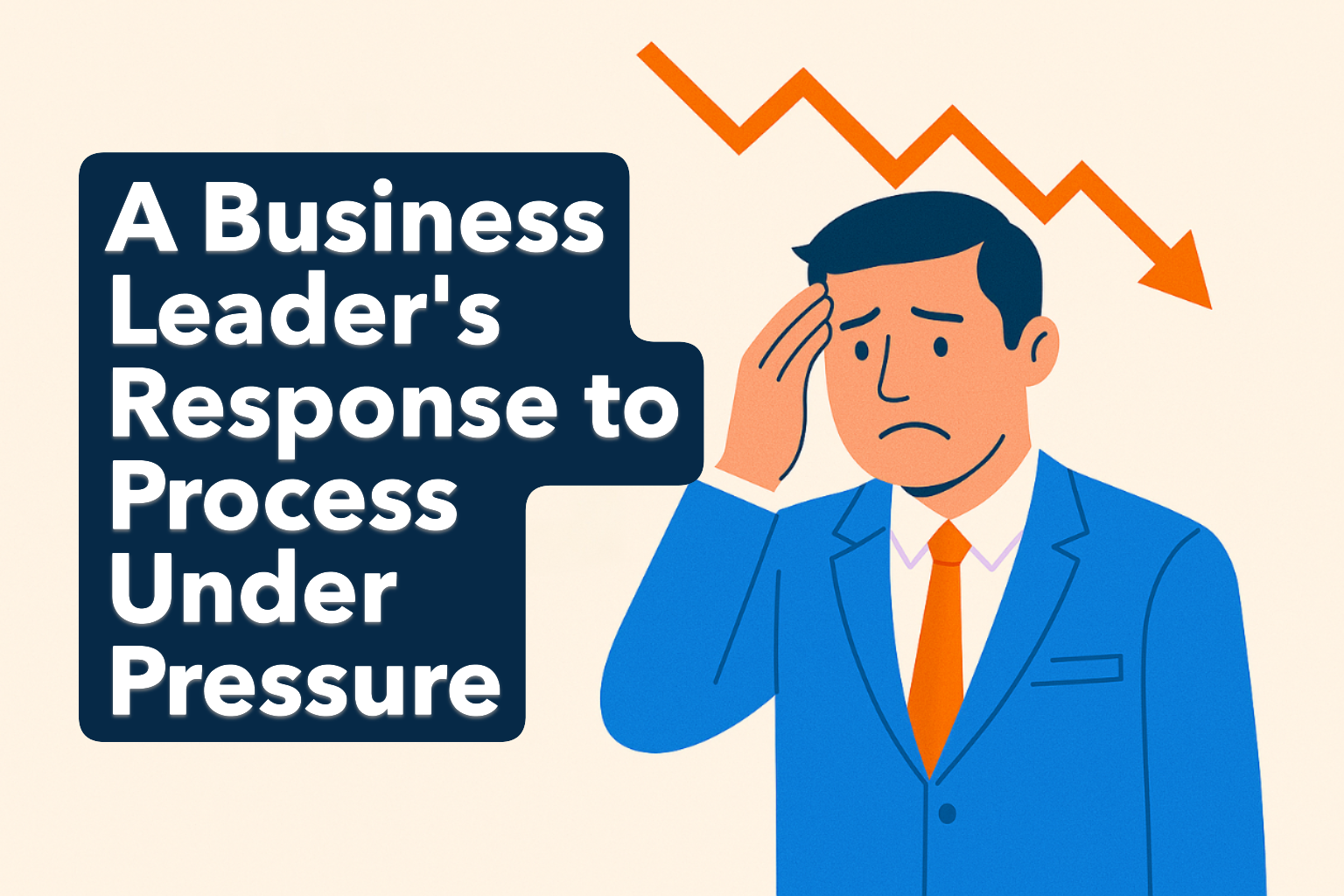The SQA2 Blog: Advice Center, General, Software Quality
Software development has long grappled with the challenge of balancing cost, quality, and speed. The traditional understanding of the relationship between cost, quality, and speed follows the well-known project management triangle: “Pick two because you can’t have all three.” This paradigm has dominated software engineering for decades, but modern advancements in quality methodologies, automation, and process optimization have challenged this notion.
In this article, we will explore the classic sliding scale where only two out of cost, quality, and speed can be optimized at the expense of the third. We will examine what happens when organizations prioritize each pair—cost and quality, quality and speed, and cost and speed—detailing the benefits and trade-offs of each approach. Finally, we will discuss how QA 2.0 and Fractional QA enable organizations to achieve all three simultaneously by leveraging preventive quality measures and cost-efficient strategies to reduce defects, lower costs, and accelerate time to market.
The Traditional Sliding Scale: Pick Two
Historically, software development teams have accepted that optimizing for all three factors—cost, quality, and speed—is unattainable.
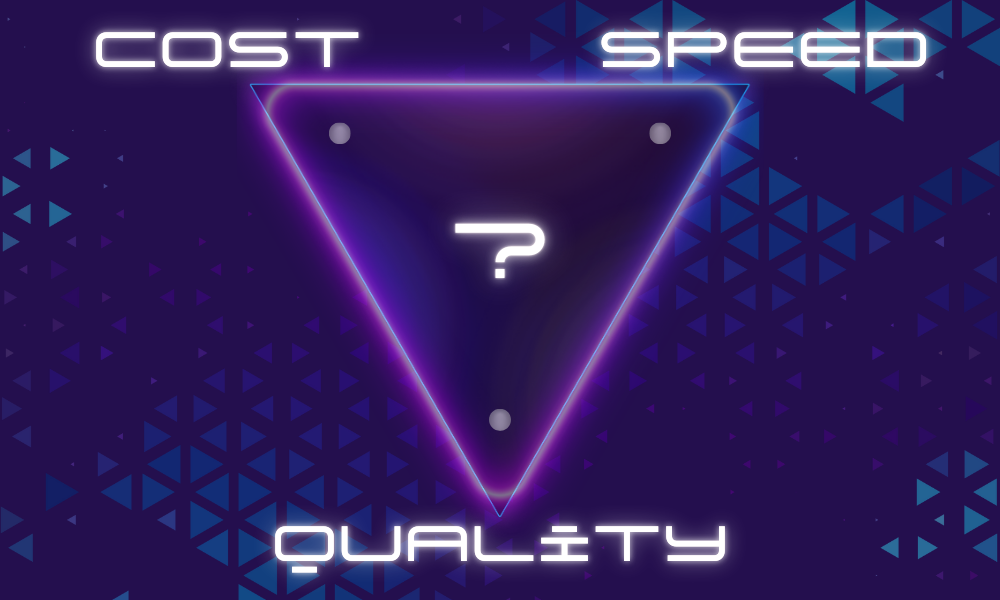
The assumption is:
- If you want high quality and low cost, speed must be sacrificed.
- If you want high quality and high speed, costs will be high.
- If you want low cost and high speed, quality will suffer.
This mindset has shaped how organizations approach quality, leading to different strategies based on their business goals and constraints. Let’s explore each of the three scenarios in detail.
Scenario 1: Cost and Quality (Sacrificing Speed)
Organizations that prioritize cost and quality often have strong QA processes that do well to catch defect thorough testing and comprehensive reviews. This approach attempts to produce a high-quality product without incurring excessive costs but at the expense of a slower development cycle.
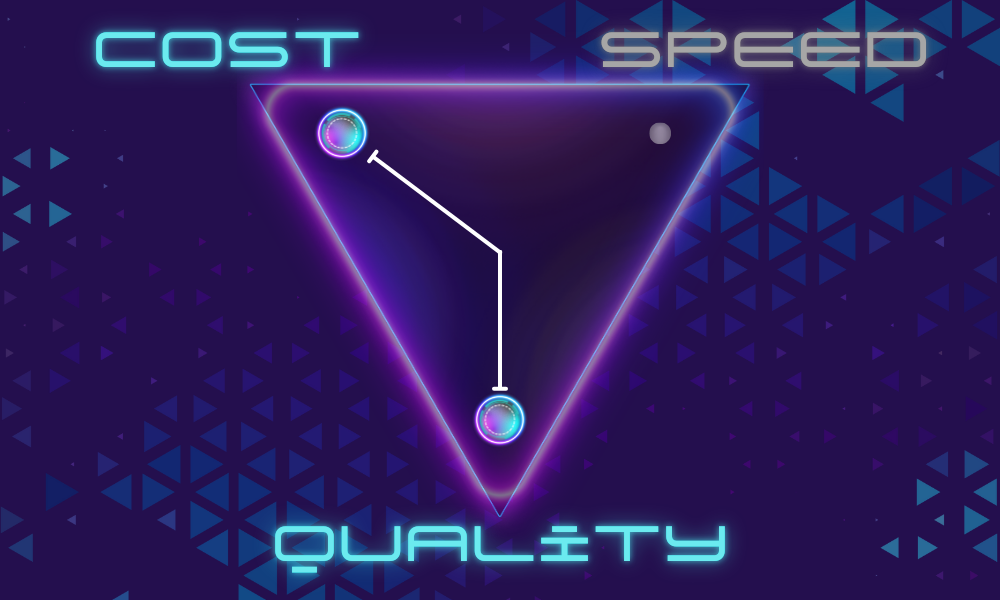
Benefits:
- Strong defect prevention strategies reduce rework and costly bug fixes post-release.
- Customers receive a reliable, stable product with fewer issues.
- Long-term maintenance costs are lower due to better initial quality.
Consequences:
- The time to market is significantly longer, which may result in missed business opportunities.
- Competitive agility is reduced, making it difficult to respond quickly to market changes.
- Development teams may feel slowed down by extensive QA processes.
This approach is often seen in industries where failure has severe consequences, such as healthcare, aerospace, and finance, where rigorous testing is non-negotiable.
Scenario 2: Quality and Speed (Sacrificing Cost)
In industries where time to market is critical, such as competitive consumer software markets, organizations may choose to optimize for quality and speed while accepting higher costs. This is often achieved by investing in automation, hiring top-tier engineers, and utilizing robust cloud-based testing environments to accelerate release cycles.
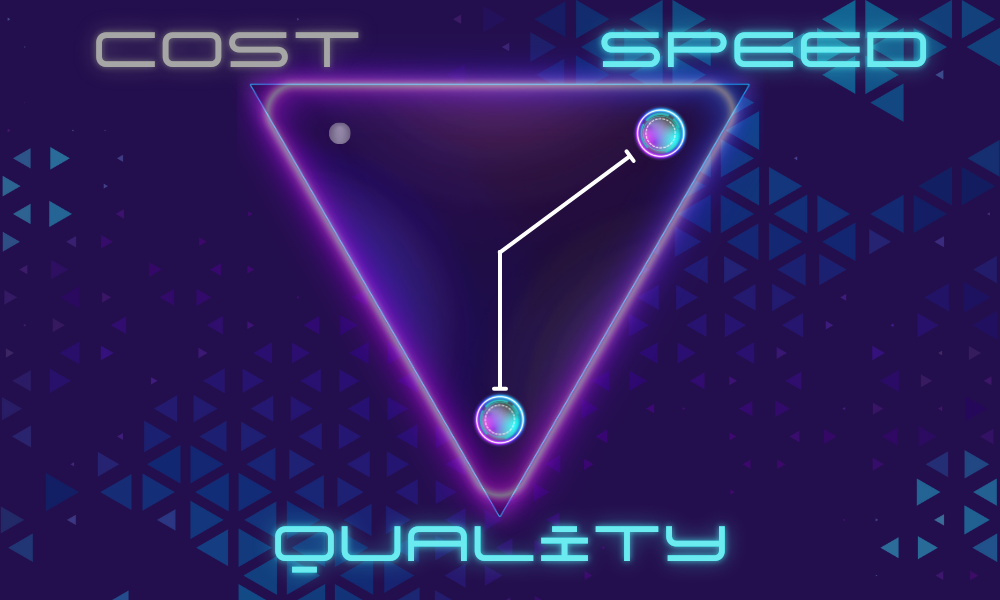
Benefits:
- Faster time to market enables rapid iteration and competitive advantage.
- Quality remains high, reducing customer complaints and technical debt.
- High-performing teams operate efficiently using automation and DevOps.
Consequences:
- The cost of maintaining a rapid, high-quality release pipeline is substantial.
- More resources are required for continuous testing, monitoring, and infrastructure.
- Scaling can be challenging if budgets are constrained over time.
This approach is common in SaaS companies and technology startups where being first to market with a polished product is a key differentiator.
Scenario 3: Cost and Speed (Sacrificing Quality)
When organizations prioritize cost and speed, they often adopt a “move fast and break things” or “fail forward” mentality. This approach is prevalent in early-stage startups, rapid prototyping environments, and companies looking to release a minimum viable product (MVP) quickly.
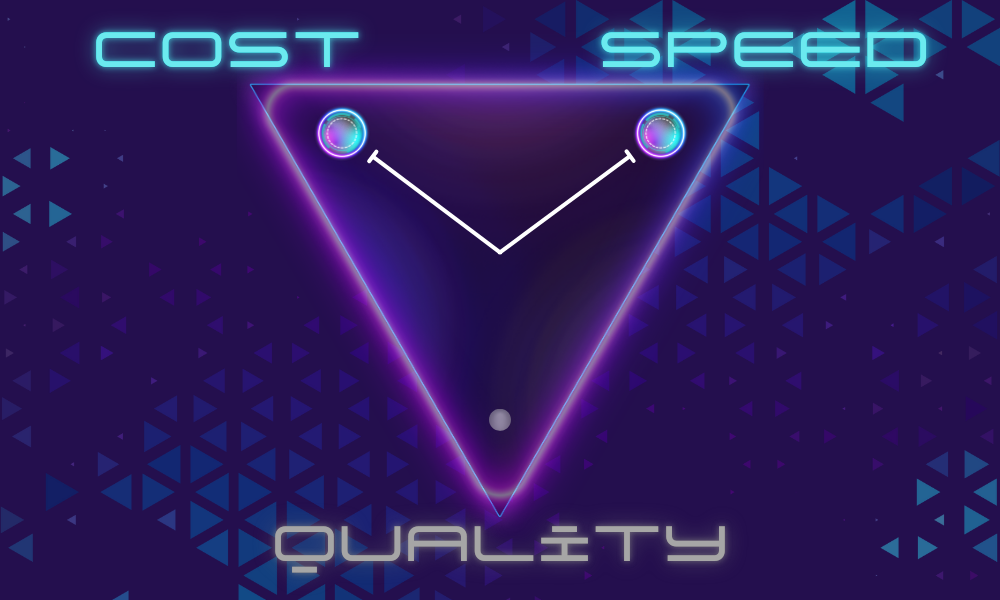
Benefits:
- Rapid delivery cycles allow for quick user feedback and iterations.
- Development costs remain low as extensive QA processes are skipped or heavily minimized.
- Initial market penetration happens quickly, gaining early adopters.
Consequences:
- High defect rates lead to frustrated users and customer churn.
- Increased technical debt requires significant investment later to stabilize the product.
- Reputation damage can occur if too many bugs make it to production.
While this approach works for experimental projects, businesses relying on long-term customer satisfaction and brand reputation must eventually shift towards a more balanced QA strategy.
Achieving Cost, Quality, and Speed with QA 2.0 and Fractional QA
Traditionally, the assumption has been that optimizing all three dimensions is impossible. However, modern QA teams can take advantage of advancements in QA practices, what we call QA 2.0, combined with Fractional QA, to enable their organizations to break free from the trade-off triangle. Though these practices, QA can elevate their organization and enable their innovation by tearing down common barriers that inhibit growth and slow down progress.
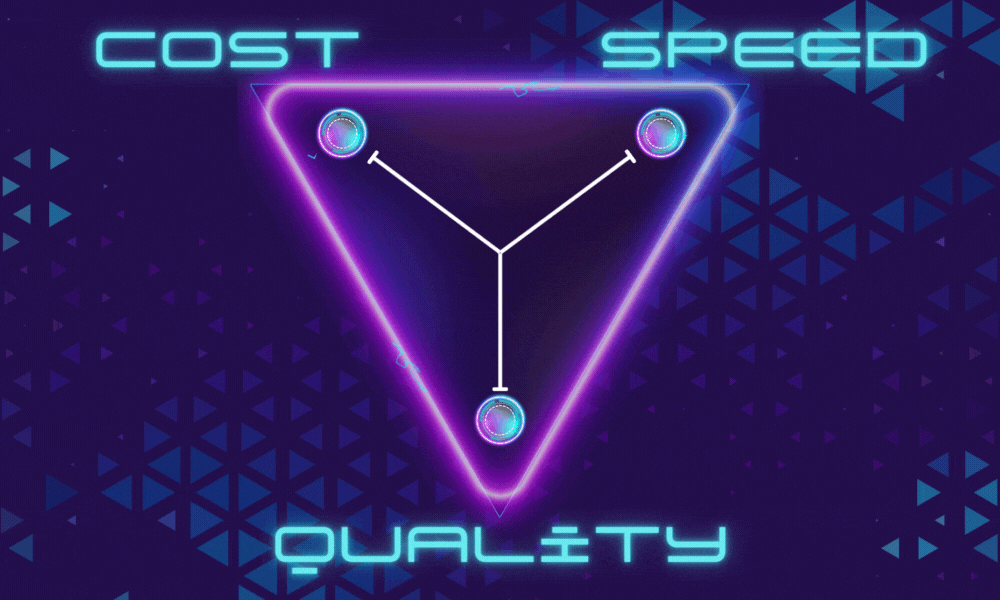
QA 2.0 focuses on:
- Prevention over detection: Catching defects before they occur through robust coding standards, design and requirements review, and test-driven development (TDD).
- Automation-first testing: Using maintainable test automation approaches to cover large portions of the test suite with minimal manual intervention.
- Shift-left testing: Integrating QA processes earlier in the development lifecycle, before the code is written, to detect issues before they become costly.
- Continuous integration and delivery (CI/CD): Ensuring rapid deployment cycles without compromising on quality.
Fractional QA plays a critical role in keeping costs predictable and manageable by providing scalable QA resources without the need for full-time, in-house testing teams. This allows organizations to:
- Adjust QA efforts based on project needs, avoiding unnecessary overhead.
- Access experienced QA professionals on demand without long-term hiring commitments.
- Reduce operational costs while maintaining consistent software quality.
- Defined, up-front costs to enable even and predictable cost allocation for the QA team.
Benefits of QA 2.0 and Fractional QA:
- Lower costs: By preventing defects early and using fractional QA services, organizations avoid costly post-release fixes and reduce technical debt.
- Higher quality: Automated testing and preventive strategies ensure a more stable and reliable product.
- Faster releases: Efficient workflows, automated pipelines, and proactive QA integration lead to shorter development cycles.
Conclusion
The intersection of cost, quality, and speed in software development has traditionally been seen as a zero-sum game, where optimizing for two factors comes at the expense of the third. However, with the rise of QA 2.0 and Fractional QA, your QA team can now achieve a balance that maximizes all three dimensions simultaneously. By shifting towards preventive QA methodologies, leveraging automation, and adopting cost-efficient testing strategies, organizations can reduce costs, maintain high quality, and accelerate time to market, unlocking a new era of software development efficiency.
Ready to optimize your QA strategy? Fill out the contact form below, and let’s discuss how we can help your team deliver better software, faster and more efficiently.
